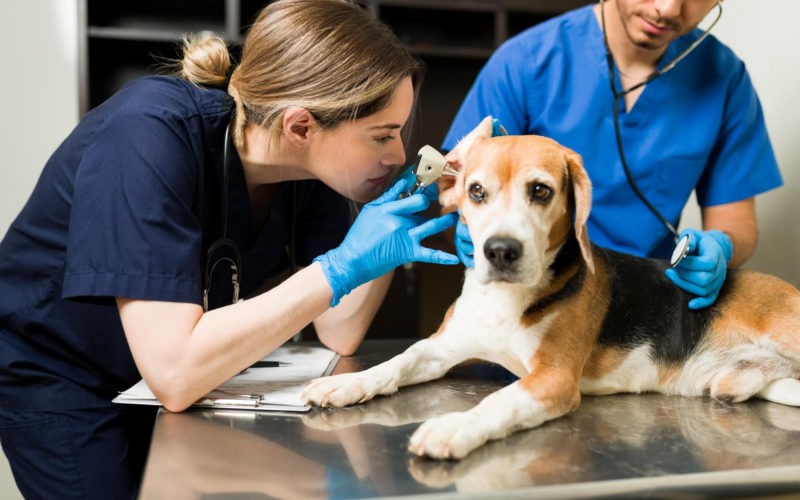Selling a veterinary practice is a major decision, reflecting years of hard work, dedication, and personal investment. Whether you’re retiring, pursuing new opportunities, or feel it’s the right time to move on, it’s important to ensure the sale is profitable, smooth, and stress-free. Proper planning and preparation can help you achieve this and make the transition as seamless as possible.
Every business transaction requires strategic planning, and selling a veterinary practice is no different. Proper preparation is key to maximising the final sale price, as various factors can influence the value of your practice. By planning strategically and following the right approach, you can avoid unnecessary stress during the transfer process.
To help you navigate this journey, here’s a blog for planning a profitable veterinary practice sale.
Prepare in Advance
One of the most important steps toward a successful and profitable sale is through the early initiation of the planning process. Ideally, owners should start preparing to sell their practices two to five years before initiating the formal process.
In this way, there will be enough time to enhance key practice features that may add value and appeal to potential buyers. Early planning also gives an opportunity to gradually adjust organizational or financial aspects that will not impact everyday business operations.
During the preparation phase, focus on enhancing the practice’s profitability by optimizing systems and processes while ensuring the client base is maintained or even expanded. This dual approach will strengthen the overall value of your practice and make it more attractive to potential buyers.
Early planning will ensure that you have sufficient time to clean up financial records, make improvements to facility aesthetics, and strengthen your team, all of this can work towards raising the sale price of your practice. Moreover, this process results in an easier transition both for the staff and the clients, thereby making the business more alluring to the buyers.
Evaluating the Veterinary Practice’s Finances
Start by assessing the current value of your practice, which involves evaluating your financial statements, client base, and any unique services you offer. Engaging veterinary practice brokers can be invaluable during this process, as they possess specialised knowledge and experience in the market. This is assessed using three key indicators: revenue, profit margin, and financial stability. Before you put up your practice for sale, ensure that you audit and also enhance your books of accounts.
First, you need to get your financial statements together: income statements, balance sheets, and even possibly tax returns for three to five years. These will be reviewed by your potential buyers so that they will know how stable the business is and if there is any potential for growth. Your books should be in order, updated, and clean of discrepancies.
Another is to reduce unnecessary expenditures and thereby improve profitability over the preceding years when the practice will be sold. Identify cost inefficiencies, bargain for a better supply rate, and scale service offerings that command greater margins. The healthier financial profile you can obtain leads to a higher sale price.
Establish the Value of the Practice
Another critical step of the process is to determine the value of your veterinary practice. This requires a full valuation process to find a solution to market value founded on specific factors including financials, location, size, client base, and competitive positioning. Working with a professional appraiser or financial advisor experienced in veterinary practice valuations is recommended.
EBITDA Method
The EBITDA model is the most common method used for the valuation of veterinary practices, although other methods exist. The EBITDA calculation reflects an approximation of the practice’s profitability and how much a buyer may be willing to pay.
The market value of a practice is usually set between four to eight times EBITDA, depending on the conditions in the market, geographical location, and risk for the buyer.
Another integral component to value is intangible assets-the strength of your client relationships, your reputation in the community, and the loyalty of your staff. Practices with strong, long-term client bases, high-quality staff, and positive reputations are usually worth more to buyers.

Benefits of EBITDA Method
| Focus on Operating Performance |
| Comparability |
| Cash Flow Indicator |
Enhance Curb Appeal and Facility Condition
Just as homebuyers are influenced by curb appeal, potential buyers of a veterinary practice often are influenced by the appearance and condition of the facilities. A clean, modern, and well-maintained clinic suggests a well-cared-for practice being professionally managed. Conversely, outdated or rundown facilities can harm a buyer’s perception and subsequent offer price.
Investments in upgrades or renovations where necessary can do much to help the facility become more attractive to buyers. Though it is not necessary to tackle expensive, large-scale construction projects, repainting, modernization of equipment, enhancement of the waiting area, and improvement in signage will certainly benefit the practice. The goal is to present the practice as a thriving, welcoming space for clients and staff alike.
Strong and Retain the Team
A well-trained, loyal, and competent staff is perhaps one of the most valuable assets any veterinary practice may have. Buyers want to know that the team they are inheriting is experienced, knowledgeable, and able to run the practice with minimal disruption. A stable team can also help retain clients during the transition of ownership.
To maximise your practice’s value, build a strong, stable team well before selling. This includes investment in staff training, improving employee benefits, and maintaining a positive workplace culture that encourages loyalty and long-term retention.
In any event, your team needs to be informed. You can deal with any concerns that they may have about it and keep your staff committed to the success of practice by involving them early.
Diversification of Revenue Streams
Diversified revenue streams make veterinary practices more attractive to buyers because they carry less risk from a financial perspective. If your practice relies heavily on one source of revenue, routine exams or vaccinations, for example, consider ways to expand your service offerings to specialty services, grooming, or boarding.
This can enhance the overall profit and worth of the practice by broadening your revenue base. For example, you could add dental care or surgery, wellness plans, or even just selling pet retail products. This can attract a broader client base and signal to prospective buyers that the practice has significant growth potential.
Facilitate Smooth Transition
Transitioning ownership is one of the toughest parts of selling a veterinary practice. A smooth transfer of ownership works to the benefit of the buyer and the seller, as not much disruption will be caused to the ongoing business activities and the continuity of care for patients will be ensured.
Transition planning should never be overlooked because of the potential damage to the reputation of the practice and upsetting client relationships.
To ensure a successful succession, prepare a comprehensive succession plan that documents the handover process to the new owner. This could include staying on board for a few months to help during the transition or introducing the new owner to key clients, staff members, and suppliers.
Legal and financial advisors should also be involved to ensure that all the documentation and contracts in place do not create any potential complications during the transition.
Understand Tax Implications
Sales of veterinary practices can also have serious tax implications that need to be carefully managed to avoid any unpleasant financial shocks. The structuring of the sale may imply myriad taxes, such as capital gains tax. It’s advisable to engage a tax advisor well before starting the sales process. This will help you understand your obligations and identify strategies to minimise the tax impact of the sale.
Another area of tax planning is seller financing, where the buyer pays for the practice over time rather than all at once. In this way, the tax burden may be spread out over several years rather than all at once.
Another key element of the sale is its structure: in an asset sale versus a stock sale. Your advisor will help you determine these and other important considerations for optimal tax control.
Promote the Practice Properly
Once you have your veterinary practice ready for sale, get it promoted properly so that you will be able to attract the kind of buyer you want. Engage the services of a veterinary brokerage firm or a professional who specializes in the sales of veterinary practices to help you identify and reach potential buyers.
They can assist in making the veterinary practice priced competitively, negotiating on your behalf, and streamlining the selling process.
In addition to advertising through the broker, you can advertise the practice in industry publications, on online listing sites, and through veterinary professional networks. You can create an attractive sales pitch that focuses on the strengths of the practice, potential for growth, and profitability as well.
Preparing for Buyer Due Diligence
If a buyer is interested in your veterinary practice, they will likely scrutinize the practice about every aspect of finance, legality, and operational matters by going through a due diligence process.
Due diligence is usually a lengthy process, hence, all documentation required should be prepared beforehand. You should prepare to hand over financial statements, tax returns, client records, lease agreements, and staff employment contracts to the buyer.
It will be worth getting such red flags cleared early on, such as discrepancies in books of account or outstanding legal cases, which may impact the streamlined process of due diligence and buyer confidence. A high level of transparency and open communication with the buyer forms the building blocks of trust, and subsequently to a smooth sale.
Conclusion
Preparing a successful sale for your veterinary practice will require comprehensive preparation, timing, and awareness of the value of your practice. Focusing on appropriate financial reporting to enhance the practice’s operating condition while creating a loyal client base will help you build a high appeal and value among potential buyers of your practice.
It is also the best thing to work with experts like brokers, lawyers, and accountants to make sure that every detail in the sale goes into a well-planned situation and follows industry standards.
This approach can help maximize profitability and ensure a smooth handover for both you and the new owner.
FAQ
1. How long does it typically take to sell a veterinary practice?
Determination of the period the veterinary practice will take before being sold depends on many factors such as market conditions and the size of the practice.
2. Should I inform my staff that the practice is going up for sale?
Yes, if your staff becomes involved in the selling process, then it ensures less hassle and greater ease in the continuation of doing business, transferring the decision of the sale to them will make it more comfortable for the employees to sustain an upbeat level of morale and to continue working very hard toward making the practice successful.
3. How is a veterinary practice valued?
Most values of veterinary practice are established based on their financial performance, client base, staff, and market conditions. The average valuation method is taking the practice’s EBITDA and scaling it up by a certain multiple based on certain standards of the industry.












